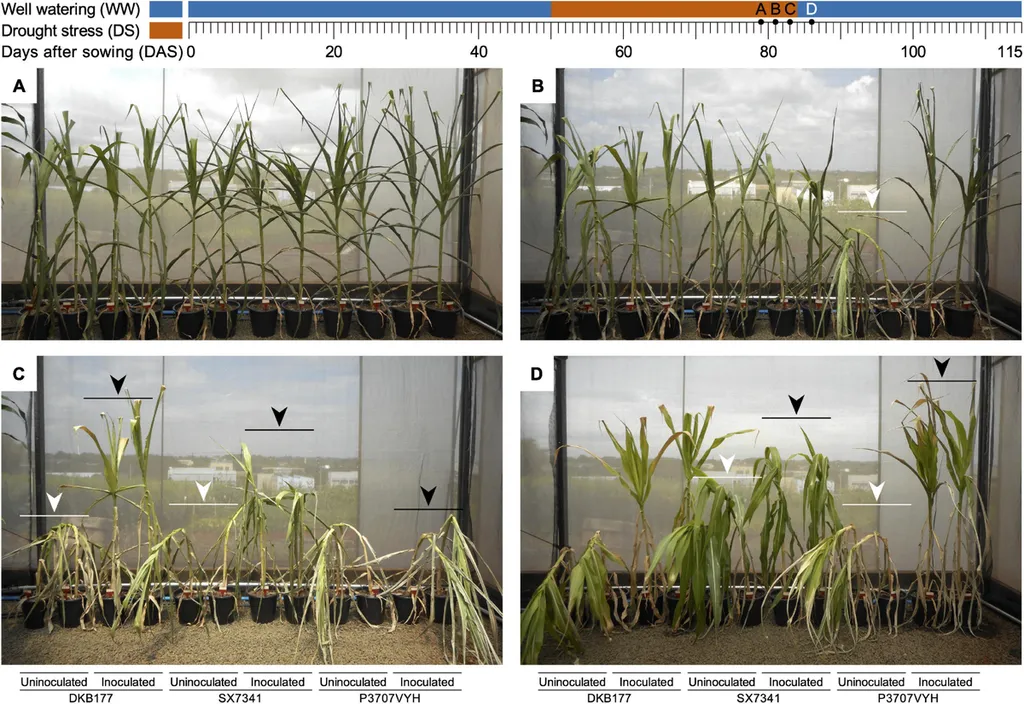In the heart of India, researchers are unraveling the intricate dance between maize and the dual threats of drought and heat, a phenomenon exacerbated by climate change. Sahil Singh Mandyal, a scientist from the Department of Agricultural Biotechnology & Molecular Biology at the Rajmata Vijayaraje Scindia Agricultural University, has led a study that sheds light on how maize, a staple crop, responds to these combined stresses at both the physiological and molecular levels.
The study, published in the journal *Scientific Reports* (which translates to “Nature Research Reports” in English), reveals that maize’s reproductive stage is particularly vulnerable to the co-occurrence of drought and heat. “The reproductive stage of maize is very sensitive to combined drought and heat stress,” Mandyal explains. “This is a critical period where the plant’s ability to produce viable seeds is tested.”
The research team subjected ten contrasting sets of maize inbreds to combined drought and heat stress in a Field-based Crop Phenotyping Facility. The results were striking. The inbred CAH 192 showed remarkable resilience, producing the highest number of pollen grains per anther and maintaining a significant seed set. In contrast, UASBM 25 struggled, showing the lowest pollen production and zero seed set under the same conditions.
But the story doesn’t end with phenotypic observations. Mandyal and his team delved deeper, selecting the contrasting inbreds CAH 192 and UASBM 25 for a gene expression study in the anther tissues. “We found that genes responsible for drought and heat tolerance were significantly overexpressed in the tolerant inbred CAH 192,” Mandyal reveals. This suggests that different sets of physiological traits and stress-responsive genes are involved in tolerance to drought, heat, and their combination.
The implications of this research are profound, particularly for the agricultural sector. As climate change intensifies, understanding how crops respond to combined stresses is crucial for developing resilient varieties. “Our study reveals that maize response to stress combinations was unique, with rapid readjustment at physiological and molecular levels,” Mandyal notes. This adaptive plasticity in maize warrants further investigation at the molecular level, potentially paving the way for innovative breeding strategies.
For the energy sector, which relies heavily on crops like maize for biofuel production, this research could be a game-changer. Developing maize varieties that can withstand combined drought and heat stress could ensure a steady supply of feedstock, thereby enhancing energy security. Moreover, the insights gained from this study could extend to other crops, broadening the impact of this research.
As we grapple with the realities of climate change, studies like Mandyal’s offer a beacon of hope. They remind us that nature’s resilience, when understood and harnessed, can help us navigate the challenges that lie ahead. The journey to unravel the complexities of plant responses to stress is ongoing, but each step brings us closer to a future where agriculture and energy sectors can thrive, even in the face of adversity.

